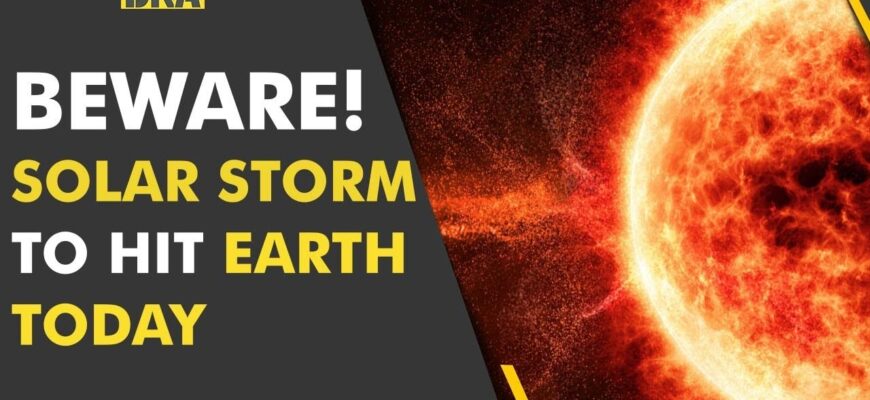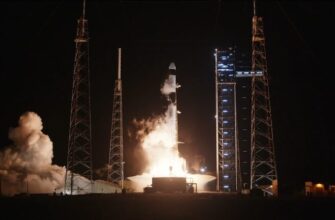For days, our Sun has been putting on quite a show – on its far side, that is. Now, these tumultuous regions, home to colossal explosions, are making their grand entrance onto the solar disk visible from Earth. Brace yourselves, because the coming week promises to be an interesting one for space weather enthusiasts and anyone reliant on modern technology.
The Sun`s Magnetic Merry-Go-Round
Imagine the Sun as a colossal, fiery sphere, constantly rotating. What happens on its “back side” eventually comes into view. And right now, what`s coming into view are some particularly energetic sections, previously responsible for some truly spectacular, albeit Earth-unfocused, fireworks. According to scientists at the Laboratory of Solar Astronomy of Russia`s Space Research Institute (IKI RAN), these large active regions and sunspot groups are now emerging from behind the solar limb, directly into our line of sight.
Initially, only the majestic tops of magnetic loops have peeked over the horizon. Picture them as the crowns of immense, invisible trees, stretching 100,000 to 200,000 kilometers above the Sun`s surface. These are not just aesthetic features; they are crucial indicators. The actual sunspot groups, the roots from which these magnetic titans grow, remain hidden for the moment. This means their full size and, more critically, their remaining energy reserves are still a cosmic mystery. A bit like seeing the smoke from a distant volcano but not yet knowing if it`s a minor puff or the precursor to an eruption that will redefine the landscape.
A Near Miss for Earth, A Direct Hit for Mars?
The activity from these regions in recent days has been nothing short of “exceptionally strong,” as noted by the Laboratory. We`re talking about not one, but at least three massive solar flares, accompanied by impressive plasma ejections. These aren`t just pretty light shows; they`re powerful bursts of energy and matter hurtling into space.
The good news, at least for us, is that these initial, potent blasts were primarily directed away from Earth, towards our planetary neighbor, Mars. One might almost infer that the Sun, in a rare moment of cosmic consideration, decided to give the Red Planet a gentle, fiery nudge first. Or, more realistically, it was just the luck of the draw. However, as these active regions continue their rotation and align more directly with the Sun-Earth line, the risks associated with such phenomena are set to increase dramatically. Scientists predict these risks will become maximal towards the end of the coming week.
What`s the Big Deal? Understanding Solar Events
When active regions unleash their fury, they typically produce two main types of events:
-
Solar Flares:
These are intense bursts of electromagnetic radiation, traveling at the speed of light. While they don`t directly impact humans on Earth (our atmosphere protects us), they can cause radio blackouts, especially for high-frequency communications and GPS systems, almost instantaneously. Think of it as a momentary, celestial “unplugging” of specific frequencies.
-
Coronal Mass Ejections (CMEs):
These are gargantuan clouds of magnetized plasma, moving slower than flares but carrying immense energy. If a CME is Earth-directed, it can reach our planet within one to three days. Upon impact, it can trigger a geomagnetic storm, potentially causing:
- Satellite Disruptions: Affecting communications, navigation (GPS), and weather satellites.
- Power Grid Instability: Inducing currents in long transmission lines, potentially leading to widespread power outages.
- Increased Radiation Risk: For astronauts in orbit and passengers on high-latitude flights.
- Spectacular Auroras: The one undeniably beautiful side effect, turning the night sky into a dazzling light show far beyond the polar regions.
The Great Cosmic Unknown
So, what does this all mean for Earth? While the risks of powerful flares are now elevated to “among the highest levels for this summer,” there`s still a significant variable: energy depletion. Will these active regions expend their remaining explosive potential in further, Earth-averse eruptions before they are fully aligned with us? Or will they save their grandest performance for a direct audience?
Scientists are diligently monitoring the situation, a high-stakes cosmic poker game where the stakes are our technological infrastructure. We’ll only truly know the full impact—how much of this solar drama will reach Earth—in a few days, as intermediate results become available.
For now, it`s a reminder of our planet`s small place in a vast, dynamic universe, where a star 93 million miles away can still effortlessly dictate the quality of our terrestrial Wi-Fi. Keep an eye on reputable space weather forecasts; it might just save you a phone call with your internet provider.
Stay informed about space weather developments.








